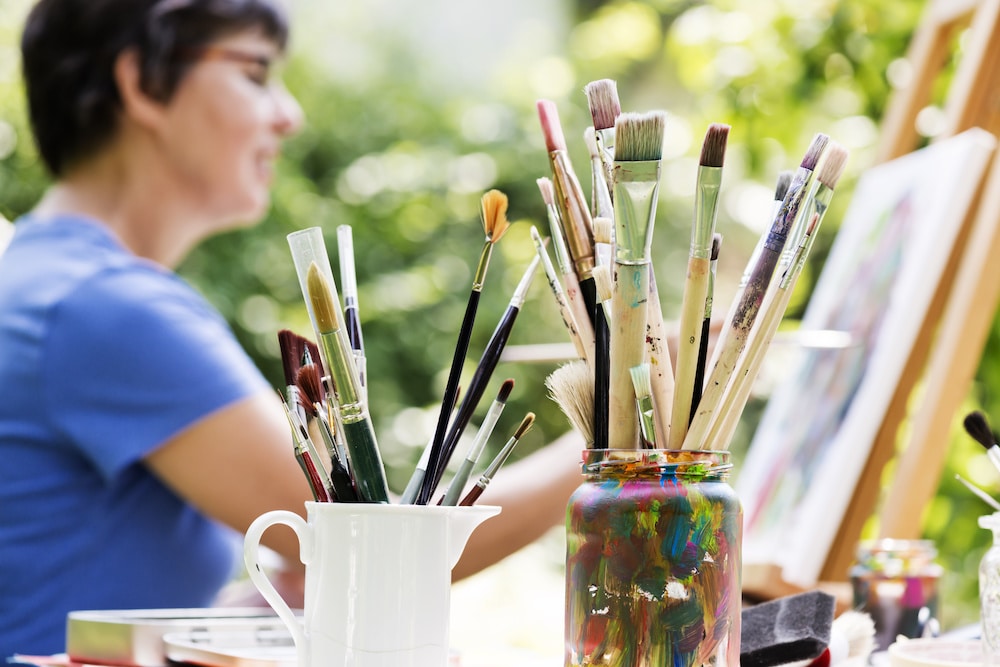Creativity is a physical representation of your suspended thoughts and memories. For example, if you have not drawn since your early teens, your doodles today will likely look the same as they did the last time you focused on drawing. Ever wonder why this is? Perhaps because your mind is trying to draw from your experiences while learning to draw as a young individual. However, don’t interpret this as you can’t draw or have never been able to draw; you’re just drawing from old memories in an attempt to manifest something today. This is much like confronting your past traumas. You first need to understand that these things happened in the past. When you face them and work on them, you can overcome them and grow stronger. You can also develop the talent to draw better than you did when you were young. Ultimately, using creativity as your medium could help free you from both traumatic experiences and struggles with addiction.
Recovery Awakens the Creative Spirit
Whether you’re recovering from a trauma or another disorder, long-term substance use can cause everything within you to feel numb. Substances don’t just numb the negative feelings. Creativity, along with joy, authenticity, connection and other positive emotions, can become numb, too. Recovery offers you freedom unlike anything you have had in a long time, or maybe ever. Treatment can help to encourage your creative spirit and help you return to practices and feelings that bring you joy. Creativity and the idea of creativity cover a broad array of activities, which is why it is beneficial in the recovery process and journey. It helps you to express emotions, experience a sense of purpose, accomplishment and enrich the relationship you have with yourself.
Healing Feelings of Shame with Creativity
Both shame and guilt have a connection to substance use disorders and traumatic experiences. These feelings can inhibit you from not only confronting your inner thoughts but from expressing or even understanding how you genuinely feel. These strong emotions can become difficult to navigate at times. Even when words are hard to communicate, creative therapy provides profound and powerful ways to express feelings in new enlightening ways. Such activities help in processing difficult emotions attached to trauma. Studies show that creative outlets help regulate emotions connected to shame and guilt, regardless of whether you create art or enjoy art. Even listening to music or reading a good book is a form of creative healing that can regulate your emotions.
Use Creativity to Find Joy
Because substances dull your ability to experience feelings of joy, it takes time to build back the ability to release happiness, find joy and obtain a sense of purpose. Creativity helps to strengthen these “emotional muscles” faster. One of the ways to build these muscles more quickly is to create for the sake of creating. Creativity does not mean having to produce a masterpiece on the first attempt. It is related to recovery in much of the same way in that it takes time and patience to develop your abilities. However, the process can bring about child-like feelings of silliness or healthy abandon because you are engaging your imagination and allowing your innermost inhibitions to run freely. Such freedom is part of why you are returned to feelings of joy quicker when utilizing creative outlets.
3 Ways to Boost Your Creativity
You might not think of yourself as a creative person, but this might be because you are still listening to the 12-year-old doodler inside you. Much like how you feel about your trauma and past experiences, it takes understanding that you are not that person anymore. You are maintaining recovery and sobriety, and you are stronger today, which also means you can explore and excel in creative pursuits.
Keep a Journal
A journal is a creative outlet where you can report and record things about yourself and your life daily. A journal is for your eyes only, and it is a great way to get you into the creative door before pursuing activities that fall outside of your comfort zone. Journaling also helps you to organize your thoughts and feelings in a physical sense. Even writing fictional stories can enlighten you about internal and external things that you didn’t know were affecting you.
Connect with Other Creatives
While experienced creatives can be greatly inspiring, you might feel more comfortable working with other beginners. This way, you will know that you’re not alone. Virtual group settings also offer a safe place to seek encouragement and support from others. These settings not only dispel perfectionism but lend a sense of community. Another unique aspect of working with a group could allow you to see how your art and your sense of creativity are your own because it is likely that each piece will vary differently from your class peers.
Exercise to Boost Creativity
Exercise gets your blood flowing and good blood flow helps to get your creative juices flowing. The release of neurotransmitters, like dopamine and serotonin, promote balance and inspiration (NCBI). Exercise not only could aid you in seizing your creative pursuits, but it can be the creative pursuit itself. For example, dancing is a form of creative exercise that relies on focus, effort and expression.
Creativity has little to no boundaries. When you can work on overcoming your most challenging thoughts and opinions of yourself, you free your inner potential, and this knows no bounds, either. If you have been avoiding confronting things about yourself and recovery and have not considered creative outlets, now is the time to seek help and give it a try. At New Hope Ranch, we offer both conventional and alternative treatments for recovery, including creative therapy. Our goal is to improve social behavior and enhance personal recovery and growth. To learn more, call New Hope Ranch, located in Manor, Texas, today at (737) 600-8565.
